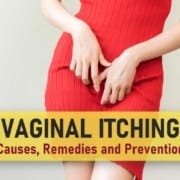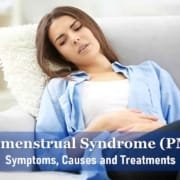Abnormal Uterine Bleeding: Causes, Diagnosis & Treatment
What is Abnormal Uterine Bleeding?
Abnormal uterine bleeding, also known as Dysfunctional uterine bleeding is irregular bleeding from the uterus other than normal periods. Periods are considered normal when adult women experience bleeding every 21 to 35 days, and teens have cycles ranging from 21 to 45 days, with a moderate flow. In normal circumstances, a woman has a limited amount of bleeding during each menstrual period, generally less than 5 tablespoons or 80 ml. Menstrual bleeding normally lasts between two and seven days. Bleeding or spotting between periods, after sex, heavy bleeding which lasts for more than 7 days in the menstrual cycle, and bleeding after menopause are the various modes of abnormal bleeding.
Causes of abnormal uterine bleeding
Many different conditions can cause Abnormal uterine bleeding. Most of the causes can occur at any age, but some are more likely to occur at a particular time in a woman’s life. 
Abnormal uterine bleeding in young girls: Bleeding before menarche (the first period in a girl’s life) is always abnormal. It may be caused by trauma, irritation of the genital area, a foreign body, or urinary tract problems.
Adolescents: Many girls experience episodes of irregular bleeding during the first few months after their first menstrual period. This usually resolves without treatment when the girl’s hormonal cycle and ovulation normalizes. If bleeding persists beyond this period, or if the bleeding is heavy, you may consult your doctor.
Abnormal bleeding in this age group can also be caused by any of the conditions that cause bleeding in all premenopausal women, including: pregnancy, infection, and bleeding disorder or other medical illnesses.
Premenopausal women: Abrupt changes in hormone levels at the time of ovulation can cause vaginal spotting, or small amounts of bleeding. Breakthrough (mid cycle) bleeding can also occur due to use of hormonal birth control methods.
Some women do not ovulate regularly, causing irregular hormone levels and intermittent light or heavy bleeding.
Some women who ovulate normally experience excessive blood loss during their periods or bleed between periods. The most common causes of such bleeding are uterine fibroids or polyps. These irregular growths and benign tumors are composed of uterine tissue that distort the structure of the uterus and lead to abnormal uterine bleeding. Other causes of abnormal uterine bleeding in pre-menopausal women include:-
- Pregnancy.
- Cancer or pre-cancer of the cervix or the endometrium (lining of the uterus).
- Infection or inflammation of the cervix or endometrium.
- Clotting disorders such as von Willebrand disease, platelet abnormalities, or problems with clotting factors.
- Using contraceptives e.g. taking oral pills irregularly or using intra uterine device (IUD).
- Medical illnesses such as hypothyroidism, liver disease, or chronic renal disease.
Birth control pills — Girls and women who use hormonal birth control (eg, pills, shot, patch) may experience “breakthrough” or mid-cycle bleeding between periods. If this happens in first few months, it could be attributed to changes in the uterine lining. If the condition persists beyond a few months, it may necessitate evaluation, and a healthcare professional might recommend a different birth control pill.
Women in the menopausal transition — Before the menstrual periods end, a woman passes through a period called the menopausal transition. During the menopausal transition, normal hormonal cycling begins to change and ovulation may be inconsistent. While estrogen secretion continues, progesterone secretion declines. These hormonal changes can cause the endometrium to grow and produce excess tissue, increasing the chances that polyps or endometrial hyperplasia (thickened lining of the uterus) will develop and potentially cause abnormal bleeding.
Women in the menopausal transition are also at risk for other conditions that cause abnormal bleeding, including cancer, infection, and body wide illnesses. Further evaluation is required in women with persistent irregular menstrual cycles or an episode of excessive bleeding.
Menopausal women — A number of conditions can cause abnormal bleeding from uterus in old age during the menopause. Women who take hormone replacement therapy may experience cyclical bleeding. Any other bleeding that occurs during menopause is abnormal and must be investigated. Causes of abnormal bleeding from uterus in old age during menopause include:-
- Atrophy (excessive thinning) of the tissue lining the vagina and uterus.
- Cancer of the uterine lining (endometrium) Polyps or fibroids.
- Endometrial hyperplasia.
- Infection of the uterus.
- Use of blood thinners or anticoagulants.
- Side effects of radiation therapy.
Diagnosis of abnormal uterine bleeding
Your doctor will diagnose the condition by taking a medical and family history. The doctor will also perform a physical examination to evaluate the overall health and a pelvic examination to confirm that the bleeding is from the uterus and not from another site (eg, the external genitals or rectum). He or she will examine the cervix to look for signs of cervical bleeding, and a Pap smear may be obtained to examine the cells of the cervix (the lower end of the uterus, where it opens to the vagina).
Doctor may order a few tests to rule out other causes of abnormal bleeding. These tests include:
- Pregnancy test: To confirm whether you are pregnant or not.
- Blood count: To rule out potential blood disorders.
- Pelvic ultrasound: It is an advanced imaging test that uses high-frequency sound waves to generate images of the female pelvic organs, including the uterus and ovaries.
- Endometrial biopsy: A procedure involving the sampling of cells from the lining of the uterus (endometrium) to detect any abnormalities.
- Hysteroscopy: A minor and generally safe surgical procedure employed for the diagnosis and/or treatment of various uterine conditions. During this procedure, a thin magnifying instrument called a hysteroscope is inserted into the uterus through the vagina to view internal structures for diagnosing or treating the conditions. The camera in the hysteroscope displays the images on a monitor, aiding the surgeon in observing the internal structures.
Treatment of abnormal uterine bleeding
The treatment plan depends on a number of factors such as your age, cause of bleeding, and whether you are planning to become pregnant. The treatment options include:
- Medicines: Mefenamic acid, NSAIDs and Tranexamic acid are used as initial treatment. Hormones (birth control pills and progestogens) help to maintain regular periods. Iron supplements are used for anemia.
- IUD that releases hormones: IUD is a birth control device that is inserted in the uterus. Abnormal bleeding may be controlled through the release of hormones.
- Dilatation and curettage (D & C) is a surgical procedure in which the cervix is expanded with a dilator and the tissue lining the uterus (endometrium) is scraped with a curette.
- Operative Hysteroscopy is a minimally invasive surgical procedure to remove fibroids and polyps, that protrude in the inner lining of uterus and cervix. the uterine.
- Laparoscopy is a minimally invasive surgical procedure in which a telescopic camera and other surgical instruments are passed into the abdomen through small holes. It is used to remove individual fibroids or entire uterus for the treatment of abnormal uterine bleeding.
- Abdominal Myomectomy is an open surgical procedure through the abdomen to remove fibroids from the uterus.
- Endometrial ablation: A procedure in which the tissue lining the uterus is destroyed by various ablation techniques such as laser beam, freezing, or heating.
- Hysterectomy: is the surgical removal of the entire uterus. This procedure will stop periods and is not suggested in women who desire to have children.
Summary
Abnormal uterine bleeding is a common problem in women that usually can be treated with medication or surgery. Surgery may be able to address structural causes of abnormal bleeding. If there are no structural causes, medication often can restore regular menstrual cycles. Whatever the cause of abnormal uterine bleeding, the many treatments available today usually can resolve the problem. Patients should consult their doctors about which medical or surgical options may be best for them.










